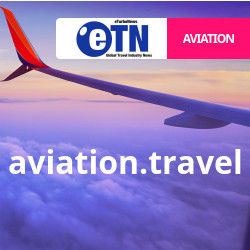After last week’s announcement that WOW Air will “pause” its Miami service, it got us worrying about a few things – the first being a spike in airfares to and from MIA.
- OneJet will operate more than 300 flights a week to and from Pittsburgh.
- JetSuite has been expanding to connect LA and the Bay Area from lesser used airports with refurbished, inexpensive 30-seat regional jets.
- FlyOtto, which FlyersRights has reported on, is reaching airports that don’t have commercial service at all.
- World Airways may be reborn to take on the big U.S. carriers on international flights, using Boeing 787s. Behind the plan is Ed Wegel, who briefly resurrected Eastern Air Lines.
- Branson, Mo. – gets thousands of visitors each year at a local theme park
- Central Illinois Airport – can serve many communities between STL and ORD.
- Columbia, Mo. – home of the state’s major public university.
- Evansville, Ind. – the location of a major food manufacturer and university; can serve communities in nearby states.
- Fort Smith, Ark. – accessible to a significant population in western Arkansas and eastern Oklahoma.
- Greensboro, N.C. – a major population center with nearby universities.
- Lake Charles, La. – near several chemical manufacturing companies in south central Louisiana.
- Lincoln, Neb. – site of the state’s capitol, largest university and second largest population.
- Rochester, Minn. – home of the Mayo Clinic, which serves more than a million U.S. and international patients a year.
- Rockford, Ill. – the center of a major population area in northern Illinois.
- Salisbury, Md. – would serve many communities on Maryland’s Eastern Shore.
- Shreveport, La. – the location of an important university and manufacturing facilities.
- Springfield, Mo. – could serve Branson, Mo., and is the location of a federal medical prison and university.
- Baraboo-Wisconsin Dells, Wis. – would serve major manufacturing facilities in northeast Wisconsin as well as thousands of vacationers.
- Enid, Okla. – the location of a significant college and would serve north central Oklahoma.
- Fond du Lac, Wis. – would serve central Wisconsin and several major manufacturing facilities in west central Wisconsin.
- Topeka, Kan. – the capital of Kansas.
- Terre Haute, Ind. – the location of several major manufacturing companies in west central Indiana.
- Yellowstone National Park – One of the biggest tourist attractions in the United States, Yellowstone lacks a nearby commercial airport. Best options are Salt Lake City or Billings, Mont., which are both around five hours away. You can fly into Jackson, Wyo., for a very high price. Increasing flights to a place like Bozeman, Mont., or Idaho Falls, Idaho, especially in the summer months could be very profitable.
One silver lining is that Representative Dave Brat (R-Va.), has introduced H.R. 5000 which would repeal restrictions that hinder investment in U.S. airlines.
Paul Hudson, President of FlyersRights.org said, “Reforming or repealing laws and policies that prohibit foreign competition, inhibit new domestic airlines startups and expansion is essential to improving air travel for the 99% of Americans and businesses that depend on commercial air travel for long distance transportation. We look forward to Free to Fly’s introduction and enactment in the next year.”
SOURCE: Paul Hudson, President


